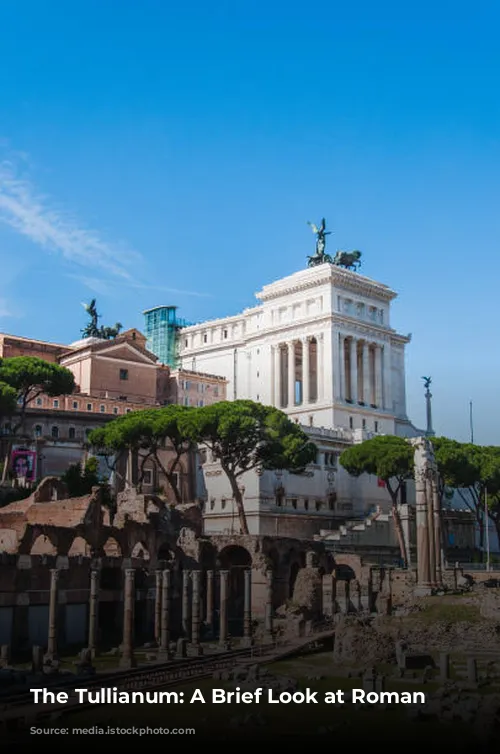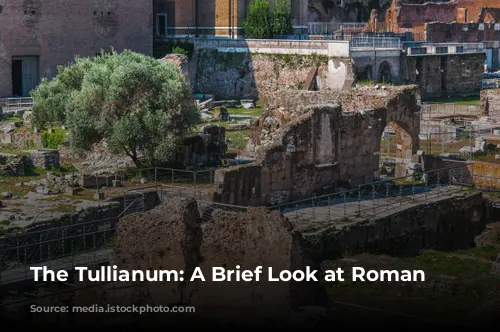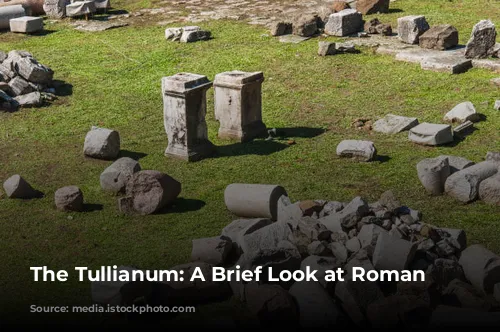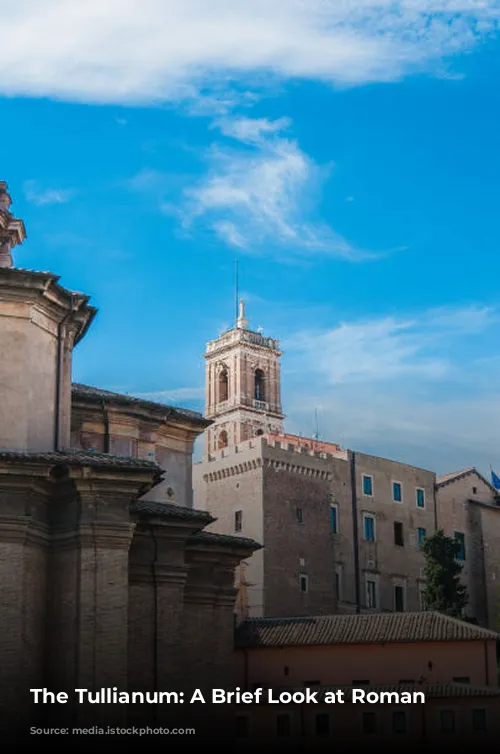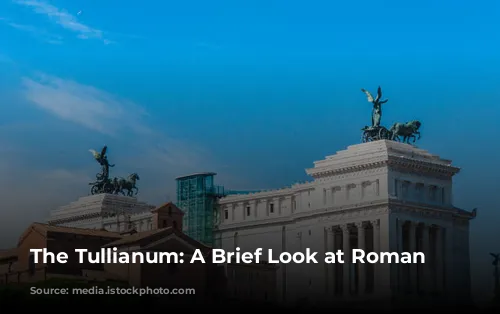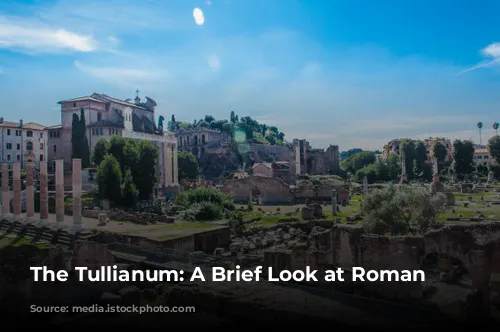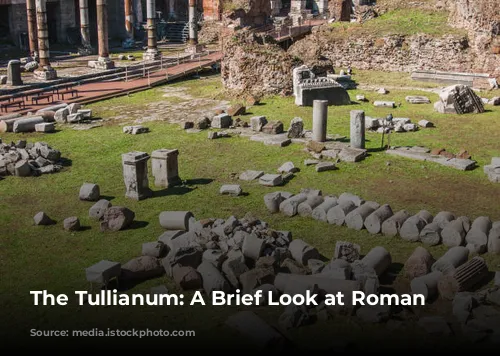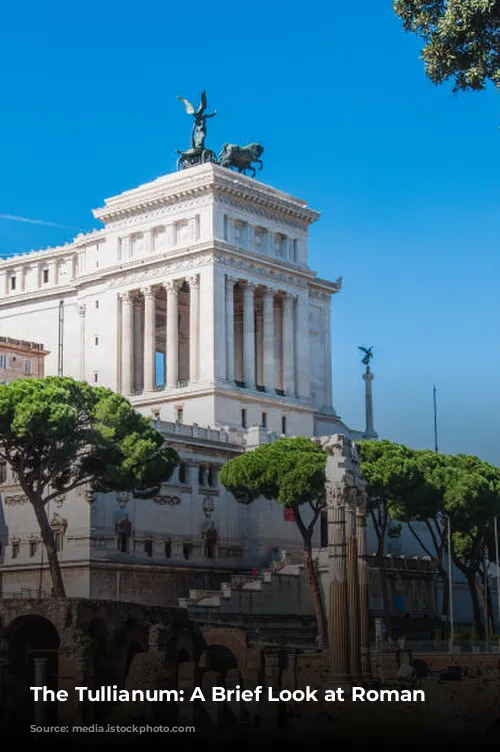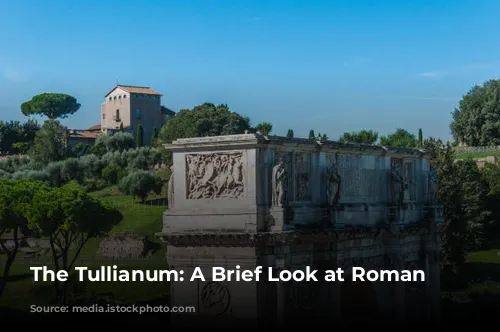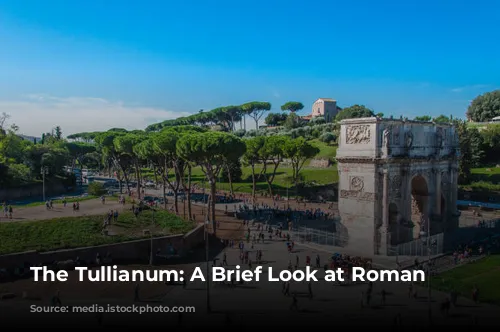Contrary to popular belief, imprisonment was not a standard sentence in Roman law. While the concept of detention appears in the Twelve Tables and the Digest, its meaning encompasses a range of practices that extend beyond modern imprisonment. In the early Republic, detention could mean debt bondage or the wearing of chains (vincula publica), primarily for slaves. During the Imperial era, it often meant hard labor in places like mills, mines, or quarries. Slaves and lower-status citizens sentenced to hard labor were often held in prison camps.
The term incarceration (publica custodia), referring to confinement in facilities like the Tullianum, was intended for temporary detention before trial or execution. While abuses of this principle did occur, they were officially condemned.

The Tullianum: A Temporary Holding Cell
Located near the Roman law courts, the Tullianum served as a jail or holding cell for short periods before executions. It was also used as a site for executions.
For example, in 63 BC, several co-conspirators of Catiline, including Publius Cornelius Lentulus Sura, were briefly held in the Tullianum and executed there for their alleged plot to overthrow the Roman government. These executions were conducted hastily, without due process of appeal, during the consulship of Cicero, who was later exiled for his actions.
Other notable figures, such as Sejanus, were also imprisoned in the Tullianum before their executions. Sejanus’s death was particularly gruesome and involved the Gemonian stairs, a notorious spot for public executions.
The Tullianum’s role in executions was not limited to political figures. The haruspex Herennius Siculus, a soothsayer who was sympathetic to the Gracchi brothers, ended up in the Carcer (a prison) where he died before his scheduled execution after accidentally striking his head on an architrave.
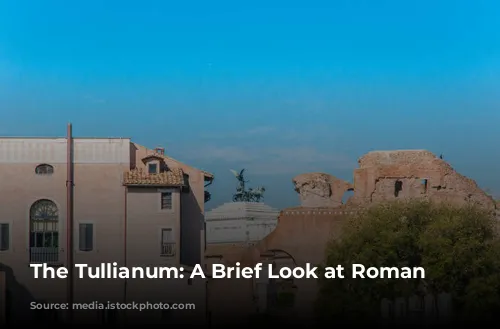
Beyond the Tullianum: Other Forms of Detention
There’s no evidence that the Tullianum was used for long-term incarceration. The lowest dungeon, in particular, was unsuitable for this purpose, although the level above it theoretically could have been used. Long-term incarceration became more common in the later Roman Empire, and from the 4th century onwards, Christian emperors began to address abuses in detention facilities, including unsanitary conditions and torture.
The term carcer could refer to “the” Carcer or simply to imprisonment in a different facility, sometimes making it difficult to determine exactly where a prisoner was held.
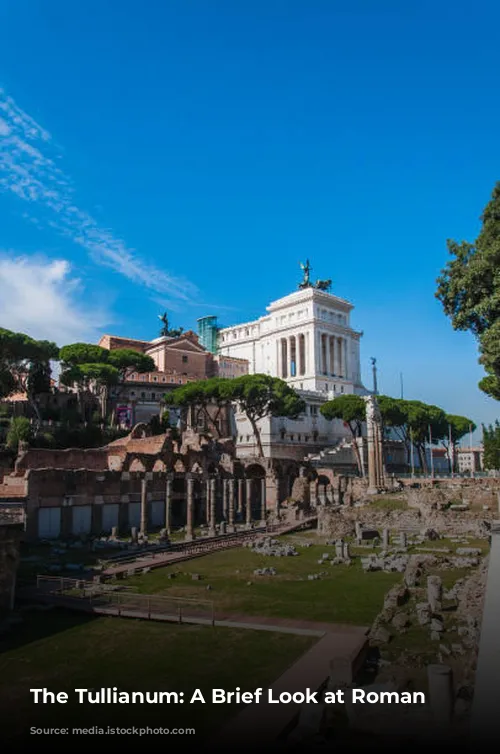
The Detention of High-Status Individuals
High-status prisoners, both Roman citizens and foreigners, were typically held in the custody of individual Romans. They might be kept in private homes or on country estates.
The line between a war captive and a hostage legally held by treaty was often blurred. The conditions of captivity could range from utter misery and humiliation to relative luxury.
For instance, Perseus of Macedon, a defeated king, was imprisoned in a foul, overcrowded dungeon at Alba Fucens. In contrast, the son of Tigranes, a king from Armenia, was held at a praetor’s house in Rome and even invited to attend dinner parties.
The Tullianum rarely played a significant role in these detentions.
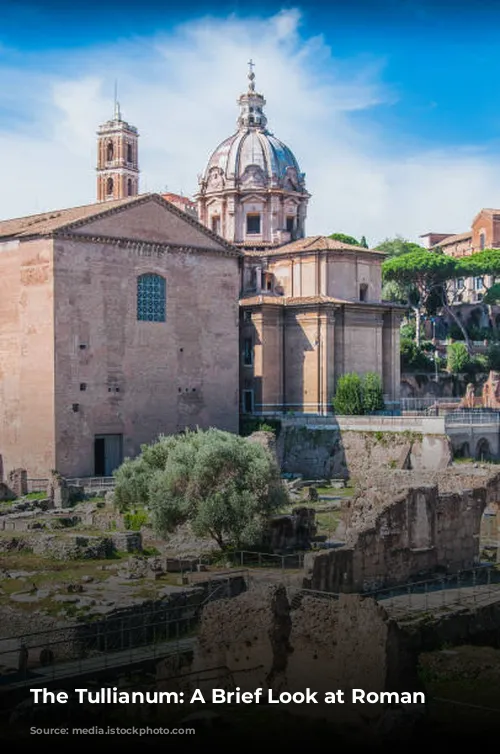
The Fate of Captured Leaders: Triumph and Execution
Captured foreign rulers or generals were often paraded in a Roman conqueror’s triumph – a grand celebration marking a military victory. In a few rare cases, these individuals were then executed at the Tullianum.
Among the few high-status prisoners executed in the Tullianum were the Samnite Gaius Pontius, the Gaul Vercingetorix, some Cilician pirates, and the Galatian Adiatorix. The fate of Jugurtha, king of Numidia, remains unclear. He may have been executed after Marius‘s triumph or died in prison several days later.
In conclusion, while the Tullianum did play a role in Roman detention and execution, it was primarily used for temporary confinement and the execution of select individuals. The majority of high-status prisoners, including war captives, were not held in the Tullianum for long periods and often met a different fate. The Roman detention system was complex and varied, with a range of practices and facilities depending on the prisoner’s status and circumstances.
